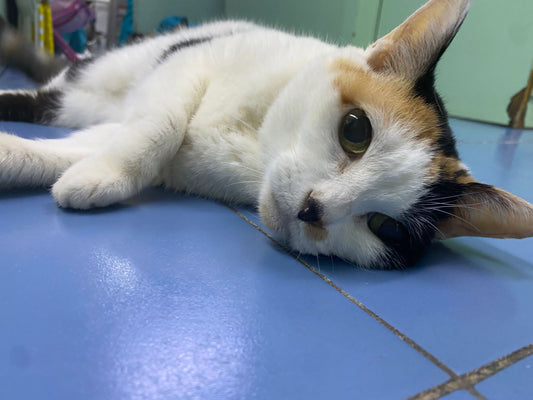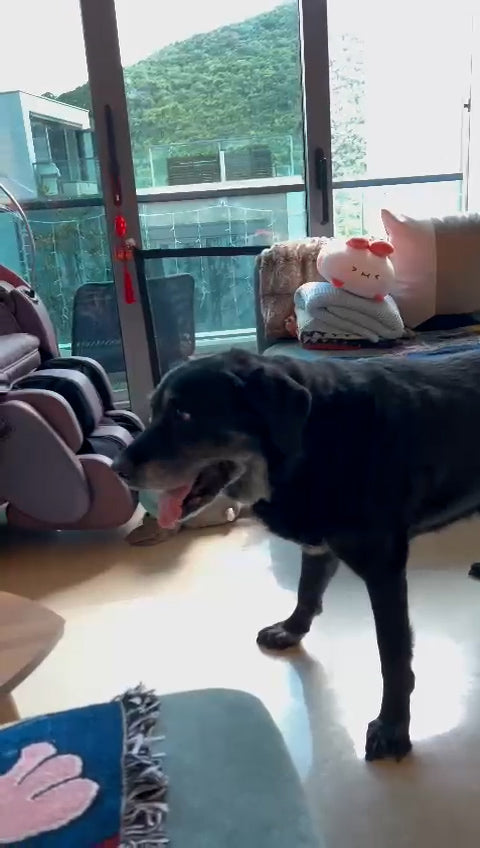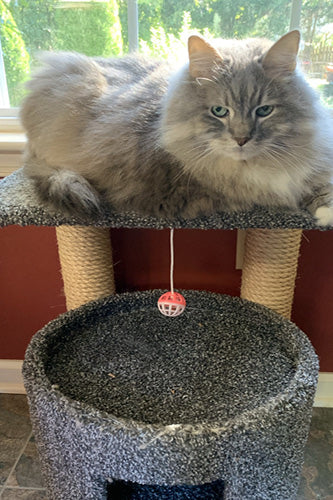At over 14 years old, Emma, the Brittany, is still just as big a character as when Betty brought her home over 12 years ago.
“The National Brittany Rescue Group didn't put her up for adoption for a couple of months. They didn't think she would live—she was in such bad shape.”

Emma and Betty share their life with Myrtle, a 70lb boxer. At 32lb, Emma is tiny in comparison, but she has always been the boss. She had control of the best chair in the house, led the way on trail walks and was always first up the stairs to bed—bagging the best spot.
“She was used to being out in the fields and going hunting. We live on 90 acres, so long daily walks are a part of our regime. But as her mobility worsened, Emma was spending more time in the chair and her bed than anywhere. That isn't healthy for an old dog—it's certainly not good for her mental health.”
Emma is at least 14, they can’t say exactly how old she is, but “elderly” probably covers it. She has lost her hearing and has cataracts, but losing her mobility has hit her and Betty hardest.
“Watching my dog age was a horrible process, and it kept getting worse every day. Watching her eyes going a little duller—a little more blank. My husband and I kept asking, what can we do to make this dog happier? We tried just about everything imaginable.”
Their daily walks had gotten shorter, with Emma bringing up the rear until she was just managing a short amble. At home, her favorite spot was almost out of reach.
“She has this wonderful chair she loves to be on—her and Myrtle battle over it. We had put cushions on the floor, so she could sort of slide off the chair when she got down. Landing was horrible for her, even when she landed on the cushions.”
Betty is the Director of publicity for the United States Dog Agility Association. She had heard of Antinol® via her agility connections, but she didn’t know anyone using it, and her vet hadn’t tried it.
“I started doing a little research online. I looked at the website and testimonials. I read some of the clinical trials, which were important to me. I'm always very tuned into the details of the research and clinical trials. I was really interested in the green-lipped mussels. In the end, I decided the only way to decide if it worked was to try it for myself.”
Having tried lots of different supplements before, with little success, Betty decided to give Emma a longer time on the initial loading period. She had a lot riding on Antinol® working.
“I was in touch with Vetz Petz and asked their advice. They said some dogs take longer. It's like humans; it’s all about chemistry. So I kept her on two softgels a day for about 45 days. When I started to see some changes, we went to just one softgel a day. There were little glimpses of what my dog used to be. I started seeing her getting up a little quicker and staying outside a little longer.”
The longer Emma was having Antinol®; the better life seemed to get.
“Instead of having seven ‘blah’ days, I was getting a day here and there where she was having a really good day. And as time went on, the good days became more frequent.”

Now Emma is back to battling Myrtle for the best snoozing chair. She can get up more quickly and doesn’t struggle to get down from her chair. At bedtime, she is pushing past Myrle to get up the stairs. She’s back to leading the pack.
“On walks, Emma started leading the way and not just bringing up the rear. The signs were gradual but became more consistent. What we love most is not just her mobility, but that her tail is wagging and her eyes are brighter. Those are the signs that you can't read on the packet. It’s those little things that tell your dog is feeling good again. This is a happy dog.”
Betty’s friends have heard all about Emma and her success with Antinol®. She posts her all over her social media.
“I love sharing my Antinol® posts and saying, listen, you don't have to accept that growing old means slowing down and giving up. My advice to anyone starting with Antinol® would be, be patient. If your dog is older or has more issues, it may take longer, but it’s worth the wait.”
Getting Emma to take pills has always been a problem for Betty. She usually uses pill pockets, but Emma can extract the pill, and Betty later finds it on the floor. But not Antinol®.
“She’s usually a little devil dog with pills, but with the Antinol® softgel she doesn’t spit it out. I just put it right in her food.”
Over the past year or two, Betty and her husband had become progressively more downhearted about Emma’s decline—but with Antinol® on their side, things are getting back to normal. Emma joins them on long walks and is back where she belongs, leading the pack.
“As I told a friend recently, she still can't hear, and she still can't see that well, but now she's out there running around the yard. So she's still an old dog, but she's still getting into trouble every day. And it couldn't make us happier to be chasing down our old dog—having to run a little harder to catch her.”
Disclaimer: These stories are for informational purposes only. The information is not a substitute for expert veterinary care. Stories are written by the Antinol team based on real interviews conducted with the pet parents and represent their own observations. These observations are not guaranteed, are not medically substantiated, and may not be typical for other pets.









